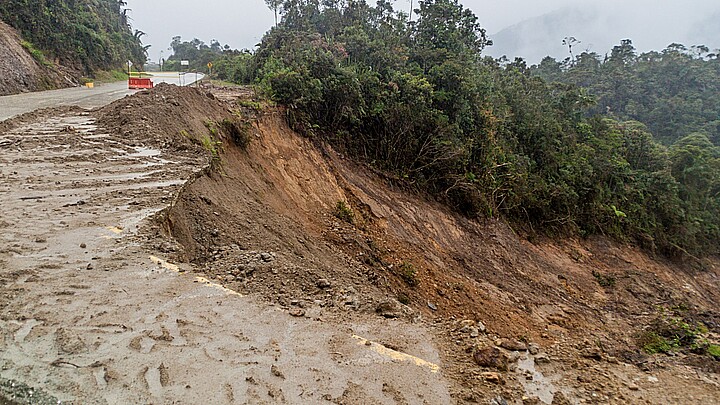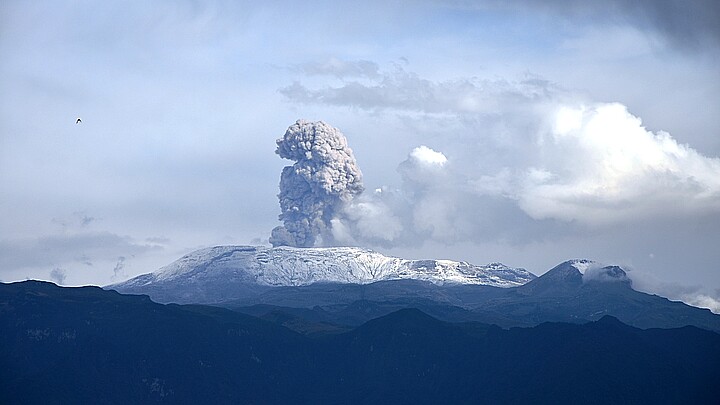Climate
Report: Brazil and Colombia see decrease in Amazon deforestation
Brazil sees a 36% decrease in forest losses in 2023, compared to 2022, a huge shift for the Amazon region, which has been a target for felling, logging and manmade deforestation since the 1970s

April 4, 2024 9:10am
Updated: April 10, 2024 2:35pm
A new report says that there has been a recent notable decrease in logging in the Amazon rainforest.
A recent analysis published by the World Resources Institute (WRI) and University of Maryland's Global Land Analysis Discover (GLAD) lab reports that tree losses in the rainforest have gone down by 39%.
Despite this, the region still faces environmental challenges since there has also been an upsurge of forest fires and tree felling in Bolivia, Laos and Nicaragua.
The report also says that despite the overall deforestation decrease in the Amazon, worldwide losses were up by a quarter because of Canadian based forest fires, a North American area which saw five times more tree losses last year than in 2022.
Despite the decrease in felling and logging, there has also been a continued forest fire surge in Brazil.
According to Copernicus, a European atmospheric monitoring service, Brazilian forest fires released the highest amount of carbon dioxide in February since the past 20 years.
Rainforests store large amounts of carbon that help keep the planet cool and deter global warming, according to environmental scientists.
The new shift in felling and logging comes with some changes in environmental policy in the two South American countries, according to Matt McGrath, a BBC environmental correspondent who recently reported on the issue.
Brazil has seen a 36% decrease in forest losses in 2023, compared to 2022, the BBC reported.
That’s a huge shift for the Amazon region, which has been a target for felling, logging and manmade deforestation since the 1970s.
Overall, the Amazon lost 3.7 million hectares of forest in 2023, a number that BBC says is “equivalent to 10 football fields per minute.”
In 2022, 43% of all deforestation in the Amazon arose from Brazilian territory.
But environmentalists say that the South American region still has a long way to go if it wants to restore deforestation levels back to what they were in the early 2000s.
Neighboring Colombia also experienced a deforestation decrease from 2022 to 2023. That South American country's "primary forest loss halved (down 49%) in 2023 compared to 2022," according to the report.
While there has been a notable shift in the two large Amazon based countries, Central and South America still face challenges, according to analysts familiar with the situation.
A recent South American gold rush has also taken a toll on the part of the Amazon that crosses into Peru, according to environmental researchers. Nearly 250,000 acres of the Amazon in Peru have been damaged, according to a 2018 report published by Wake Forest University in the U.S.
Bolivia experienced a 27% increase in 2022 and a third year record loss, partially due to manmade forest fires. Nicaragua also faced a surge due to an increase in farming.
Even some areas in Brazil are still facing increases. One forest region and agricultural hub, Cerrado, saw a 6% increase in tree losses.
ADN has also reported that there has been an increase in litter and pollution harming the environmental sanctity of the Darien Gap, a 575,000 kilometer natural land bridge that connects Central and South America between Colombia and Panama, as a result of increase migration through the area.
As a result, Panamanian officials announced they were shutting down the border and increasing efforts to deter illegal immigration. A Sept. 2023 ADN report revealed that the Panamanian government was even taking efforts to repatriate migrants back to their home countries if they crossed illegally across the land bridge.
An estimated 506,000 migrants illegally crossed the Darien Gap from South America into Central America in 2023, according to a Dec. 17 Associated Press report, a dramatic surge from the 30,000 that crossed in 2016.
“Plastic bottles and other waste now litter the streets and surrounding forest. With limited sanitation facilities in the Darién Gap, some migrants and asylum seekers defecate in the Turquesa’s waters, which creates health issues for the residents who rely on it to quench their thirst,” Al-Jazeera wrote in March.
The increase in migration has also impacted water sanitation since thousands have created encampments in the land bridge.
In an interview with the AP, Angelis Flores, a 28-year old wife and mother traveling with her family in the region, told the international press agency that she and her son got sick from what she believes was contaminated water from once unpolluted streams.
“There was a body in the middle of river and the ‘zamuros’, those black birds, were eating it and picking it apart … all of that was running in the river,” she said.
In 2022, ADN reported that casualties were also creating environmental hazards in the area. One 32-year old woman, who identified herself only as Cristina said the area “smells like death because of the people who died.”








